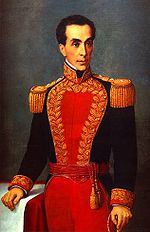Invasion by the Incas brought the imposition of their laws, taxes, administration, culture and language (quechua) to a great part of the people in what is Bolivia today.
This extensive territory was part of the Peruvian empire whose capital was Cuzco, the “navel of the world.”
 During the Spanish conquest, Francisco Pizarro sent his brother (Gonzalo Pizarro) to conquer Callao and Charcas in 1538 which is now in Bolivia. It took around 60 years to conquer the entire territory.
During the Spanish conquest, Francisco Pizarro sent his brother (Gonzalo Pizarro) to conquer Callao and Charcas in 1538 which is now in Bolivia. It took around 60 years to conquer the entire territory.
In 1561 the Charcas Royal Court was established in the city of La Plata (currently Sucre), which was the supreme legal authority in Alto Peru. The objective was to create a new regional administrative center to control that area which was overflowing with silver.
Thus Spanish imperialism took over that part of the Americas, attracted by the large gold and silver reserves.
The new cities created by the conquistadors filled with assemblies, legal systems, town halls and of course military authorities.
This authority imposed its culture and religion by force and abuse of power, exploited the people and benefited from their resources which awakened a feeling of hate and ill-feeling toward Spanish power.
The repressive measures of the Spanish lead to many rebellions (like the 1780 uprisings), one of which was the rebellion of Tupac Catari who laid siege to the city of La Paz for 109 days. This indigenous movement was violently suppressed, and its leaders were executed November 13, 1781.
The ideas of independence that began with the French Revolution (1789), independence of the United States (1776) and invasion of Spain by Napoleon Bonaparte in 1808 were also reproduced in the spirits of the South Americans.
The first uprisings took place in 1809 in Chuquisaca and La Paz. In 1809 a group of revolutionaries in La Paz, led by Pedro Domingo Murillo, proclaimed the independence of Alto Peru for the first time.
One year later, Buenos Aires, the capital of the Rio de la Plata Viceroyalty, declared its independence from the crown.
Argentine troops faced the Spanish royalists in the Battle of Suipacha on November 7, 1810. A year later in the Battle of Guaqui, General Goyeneche, in command of the royalist military forces, defeated the Argentine troops. Military and partisan conflicts lasted until 1816.
 Beginning with Chile in 1820, a great military battle movement began to liberate Alto Peru. After many battles, the army of San Martín entered Lima July 12, 1821 and proclaimed independence on July 28, 1821.
Beginning with Chile in 1820, a great military battle movement began to liberate Alto Peru. After many battles, the army of San Martín entered Lima July 12, 1821 and proclaimed independence on July 28, 1821.
On August 6, 1824 at the battle of Junín, Bolivar defeated Canterac, which is the victory that marks the first step toward the final victory at Ayacucho.
On February 9, 1828, Marshall Sucre called the provinces of Alto Peru to a congress where the destiny of the nation would be decided. There were three options: become part of Rio de la Plata, maintain unity with Peru or establish complete independence.
The assembly that took place in Sucre on July 10, 1825 unanimously chose total independence for Alto Peru (Bolivia).
Finally, the President of the Assembly, José Mariano Serrano, composed the Declaration of Independence with the help of a commission and established the  symbolic date of August 6, 1825 en homage to the battle of Junín.
symbolic date of August 6, 1825 en homage to the battle of Junín.
By decree it was decided that the new country would bear the name of Bolivar as homage to the Liberator who was declared Father of the Country at the same time.

Bolivia began its independent existence with the territories that made up the Charcas Royal Court which then comprised four provinces that became the departments of La Paz, Chuquisaca (with Sucre as the capital), Santa Cruz, Cochabamba, Potosí and soon thereafter, the department of Oruro.
Road to the bicentennial:
 Today Bolivia is 185 years old, and President Evo Morales has decided to call an honor session and deliver his speech in Santa Cruz.
Today Bolivia is 185 years old, and President Evo Morales has decided to call an honor session and deliver his speech in Santa Cruz.
In the current political context, with the problems of regional autonomy (particularly in Santa Cruz), he delivered his speech in Santa Cruz (the economic force of the country and the center of government opposition) and recognized the importance of this city.
Activities began at 6:30 with a military salute at the Urbano Park. Next came the traditional Te Deum in the cathedral en homage to the Catholic Church. A new touch came in the 24 de Septiembre Plaza in the form of an intercultural and interreligious ceremony with participation by Bolivian indigenous peoples, followed by a civic parade.
The Cruceños (as the people of Santa Cruz are called in Spanish) took advantage of the event to request that the whipala (a multicolored flag that represents the many indigenous communities of the country) not be used in official festivities in the main square.
Both students and adults demonstrated in front of the departmental offices singing the Santa Cruz anthem and shouting: “principles are not negotiable.”
The wiphala is not recognized by everyone in Bolivia, especially in the east (Santa Cruz, Beni and Pando) where racism is very strong against the indigenous.
The Plurinational State of Bolivia honors its name. We hope that the efforts of our new government to maintain unity will be repaid.
Source: https://www.bolivianet.com/historia/independencia.html
Page 7, Friday, August 6.


